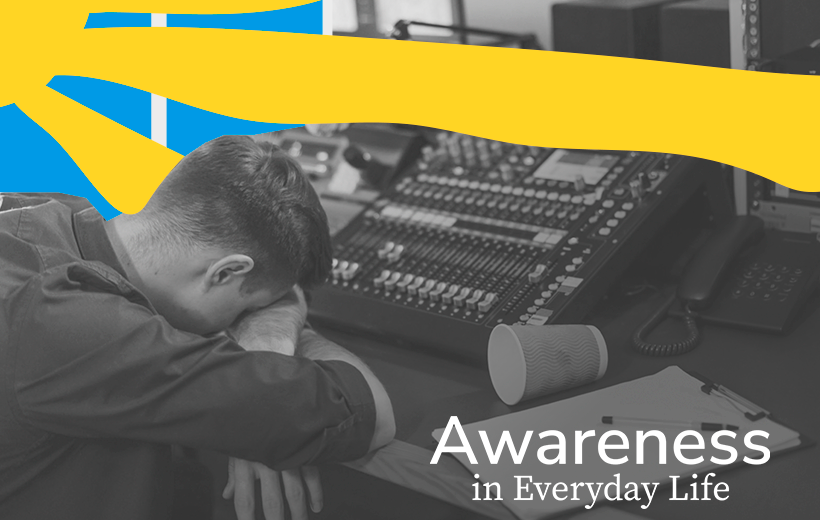MTP Grad: Supporting Hospice Employees
By Franka Cordua-von Specht • 3 min read
By Franka Cordua-von Specht • 3 min read

When Stefan Markov reflects on how his parents spent their final days, he wishes it would have been in the comfort of hospice care. “I lost my parents to cancer in a hospital environment, not in a hospice environment, back in Bulgaria, and it was very, very tough,” Stefan, a product manager in the IT industry, said in a recent interview.
He shared that the hospital was not set up to offer end-of-life care. Both his parents were in general rooms with other patients, separated by only a meter or two, without even a privacy curtain. “We never got any space to talk about anything,” Stefan recalled. “It was all very focused on how the treatment was going, with some hope that the end wasn’t so near, even though deep down, we all knew.”
The hospital, underfunded and understaffed, struggled to provide dignified care with overwhelmed staff. “I could see that the staff themselves were struggling. They had, in a way, become more insensitive, in my opinion, as a protection mechanism to deal with the challenges that were outside their control,” he said.
The experience left an indelible mark on him. Years later, after relocating with his wife and two daughters from Bulgaria to the Isle of Man, an island in the Irish Sea, he found himself drawn to the local hospice, offering his time as a volunteer.
One particular memory stands out: the day the hospice’s new CEO gathered the volunteers for a meeting. Upon learning that Stefan was a meditator, the CEO posed a question that would stay with him: “Can you do something for the hospice with your skills in meditation?” Stefan’s initial reaction was one of hesitation. “I don’t know,” he replied, uncertain of his ability to teach others. “It’s one thing to practice and to sit on the cushion,” he reflected. “I feel it’s a very different skill to actually teach others to do that.”
Around the same time, an email announcing the first Tergar Meditation Teacher Program arrived in his inbox. The timing was perfect. Stefan enrolled last year and graduated this August. Now, after completing the intensive year-long program, he is collaborating with the hospice’s HR department to introduce the Anytime Anywhere Meditation (AAM) program to its employees as part of a training program.
“Hospice is an emotionally difficult environment to work in,” Stefan said. “The employees of the hospice firsthand witness a lot of suffering in the patients and their families.” He believes that meditation can provide a crucial tool in coping with these challenges. “Meditation can offer a way to think about it differently, to accept this sadness and turn it into the compassion that every employee exercises every day, just by working at the hospital, just by being there.”
But it’s not just the emotional toll that concerns him. Stefan also sees meditation as a support for hospice employees’ everyday work stress. “Every corporate environment brings stress, but working for a charity with limited capacity adds an extra dimension. Employees want to do as much as possible with as few resources as possible, which can lead to work-life balance problems and burnout. I think meditation can offer very practical tools to help.”
He spoke about the importance of shifting focus from daily challenges to recognizing the value of their work. “It’s so easy to focus on the problems, on the challenges of day-to-day work, and not to appreciate the amazing value that every single one of them is adding. I think meditation can help people see that and make them feel more at ease with the challenges of just being so close to people dying.”
Stefan’s journey into meditation began twelve years ago while living in Bremen. He came across a video by Matthieu Ricard, leading him to purchase one of his books. The Amazon recommendation algorithms then guided him to Mingyur Rinpoche’s The Joy of Living — his first exploration of meditation and Buddhism. This was a significant shift for Stefan, who had previously considered himself an atheist. “Born and raised in Bulgaria, spirituality was not encouraged. Buddhism was not a philosophy that was available, at least not to the masses in Bulgaria,” he said.
Now, Stefan is excited to share the AAM program with others. “I think AAM fills a big gap in the teachings of meditation,” he said, contrasting it with popular apps like Headspace or Calm. “There isn’t anything that develops you, that takes you on a journey, on a path.” AAM, he believes, offers just that.
“It allows you to start from zero, to learn how to meditate, but also gives you just enough structure to feel this sense of progression.”
September 2024

Franka Cordua-von Specht, co-founder of the Tergar Vancouver Practice Group and Tergar Canada, works for Tergar International’s marketing and communication team. She is a Tergar Guide and facilitates Joy of Living workshops. 2003.
Learn meditation under the skillful guidance of world-renowned teacher Yongey Mingyur Rinpoche at your own pace.


What happens when the success you’ve chased for years suddenly disappears?

“When we address issues in the outer world, we start by looking inward, and we take care of the inner environment so we can be in better shape to care for the outer environment.” – Mai-Linh Leminhbach

Maura Peglar reflects on her lifelong spiritual journey, from childhood curiosity to a deep engagement with Tibetan Buddhism, guided by various teachers and personal experiences of loss and transformation.
If you enjoyed reading our articles, please join our mailing list and we’ll send you our news and latest pieces.